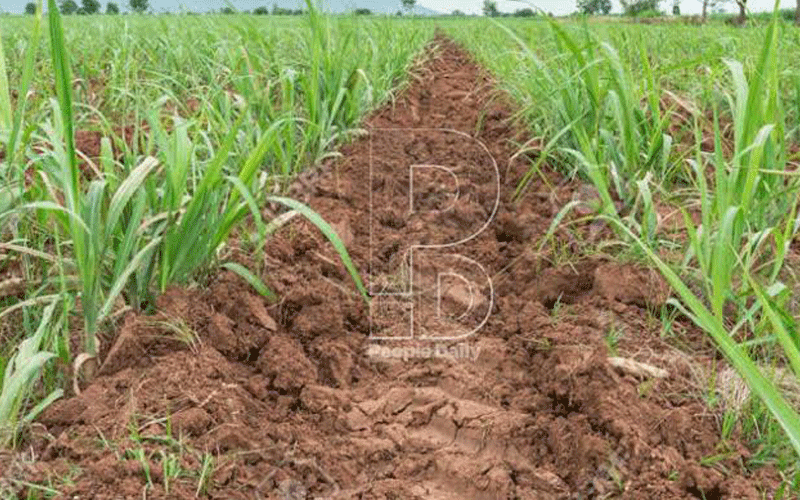Salt, sugar smugglers shovel in millions at Kenyan border
By Musa Radoli, February 14, 2020Musa Radoli
Sugar and salt smuggling between Uganda to Kenya has intensified. This has been triggered by the ever increasing demand for sugar on the Kenyan market as local production dwindles.
This has not only intensified importation of raw sugarcane from Uganda by western Kenya millers but encouraged cartels to smuggle the “white gold” into Kenya
Salt smuggling from Kenya has been shored up by increasing demand for it in the Ugandan market and beyond since the country does not produce the commodity.
Kenya National Chamber of Commerce and Industry (KNCCI) Busia County branch chairman Peter Kubebea said it is a big irony that sugar is today being smuggled from Uganda to Kenya when the reverse was the case in the 1980s to 90s.
“Traders did whatever was in their power to procure permits from District Commissioners allowing them to buy sugar from the local National Trading Corporation (KNTC) branches warehouses to sell it to Uganda,” said Kubebea.
He said that unless the country’s sugar sub-sector is put in order it is doomed to collapse compounded with cheap imports from other external sources.
Bureaucracy
“White gold smugglers avoid using official KRA entry and exit points in Busia and Malaba to evade tax and avoid perceived delays in clearing the commodities because of the bureaucracy involved,” said Kenya Revenue Authority (KRA) Western Kenya boss Joseph Kaguru.
Kaguru said apart from being flooded into local markets within the county, the sugar is transported for sale to virtually all neighbouring counties including Kakamega, Bungoma and Vihiga but also to far destinations in Kisumu, Eldoret, Kericho, Nakuru all the way to Nairobi.
Smugglers use the myriad of panya routes along the porous border to deliver the cargo to their target markets.
“Both salt and sugar is packaged in 50 kilogramme bags. Smugglers buy salt at Sh2,500 per bag from Kenya and resell it at Sh4,500 in Uganda, while the sugar is bought at Sh4,500 per bag in Uganda and resold at Sh5,500 in Kenya,” said Kaguru.
Business Hub established that the sugar is transported by hundreds of covered 12 to 18 -wheeler transport trucks from sugar factories in Uganda and offloaded at strategically positioned warehouses on the Ugandan side both in Busia and Malaba where it is bought by smugglers.
Interestingly motor bikes are their preferred mode of ferrying sugar through panya routes especially in Sofia and Marachi estates in Busia town. Others are pick-ups, handcarts and bicycles.
Heavy loads
Most Kenyan traders from Busia county’s interior towns like Mungatsi, Nambale, Bumala, Butula, Amukura, Funyula Sio Port and Port Victoria dispatch either their own motor bike riders or boda-boda operators across the border through these routes to get the white gold from Uganda.
A motor bike is packed with five or six 50kg bags for onward transportation.
According to Uganda Revenue Authority (URA) officials, the sugar is sourced from Kakira, Kinyara Sugar Works, Sango Bays Ltd, Sugar Corporation of Uganda Ltd, GM Sugar Uganda Ltd, Amuru Sugar Works Ltd, Atiak Sugar Factory, Busia Sugar Factory Uganda, Hoima Kamuli, Kenlon Industries Uganda, Buyende, Kyankwanzi and Mayuge sugar factories among others located mostly in the interior of the country.
Unlike Kenya, Uganda has more than 20 sugar factories scattered across the country producing surplus sugar for export.
Kenya has only about 10 sugar factories led by the beleaguered Mumias Sugar Factory, Nzoia, Butali, West Kenya, Chemilil, Muhoroni, Sony, Sukari, Ramisi, Trans Mara and the latest entrant, Busia Sugar Industry’s factories.
“We are aware that thousands of tonnes of sugar are being smuggled to Kenya and we are collaborating with our Kenyan colleagues to ensure that the dealers pay tax on both sides of the border,” said URA’s eastern regional boss Peter Kiggundu.
The salt is usually hauled to collection centres in Busia and Malaba town by 18 to 24 -wheeler trailer transport trucks that source it from salt factories as far as Mombasa and Magadi to feed the hungry Ugandan markets.
Once in Uganda it is also transported to other landlocked countries in the interior especially the Democratic Republic of Congo’s (DRC), Rwanda and Burundi for sale to consumers.
